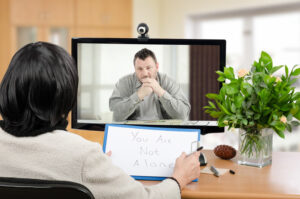Are you “HEALING” or “DERAILING” your grief process?
Grief is an equal opportunity offender and impacts everyone, especially during the era of COVID-19. However, how we understand grief varies from person-to-person. Many…

Grief is an equal opportunity offender and impacts everyone, especially during the era of COVID-19. However, how we understand grief varies from person-to-person. Many…

Since the outbreak of COVID19, many healthcare professionals have switched to telehealth platforms, including counselors and therapists! Called Telemental health or teletherapy, it is…

Difficult Times As our nation and world around us is surrounded by news of the COVID 19 epidemic, it can be very easy to…

Teletherapy is a practice that has become more popular as technology advances, creating easier access to mental health care. This can be a great resource, especially for those who live in more remote areas, but teletherapy may not be best suited for everyone.

Loneliness affects everyone at some point in their lives. Studies show that married, single, young, old, employed and unemployed – all of us experience…

We all have those days. Those days that leave us feeling shackled to our humanity, trapped by our trappings, and tied to our persistent…

This is our second post in a series where we explore daily practices that nurture and encourage healing. Our last post discussed the “Healing…

An ancient Greek philosopher named Heraclitus once said, “The only thing that is constant is change.” Transitions are a normal part of life, although…

We think anxiety is “bad” in our culture, and that it needs to be alleviated. We may think something is wrong with us if…
End of content
End of content
Life’s too short to stay stuck. Request an appointment now.
Would you like to get our monthly resources for mental wellness?
